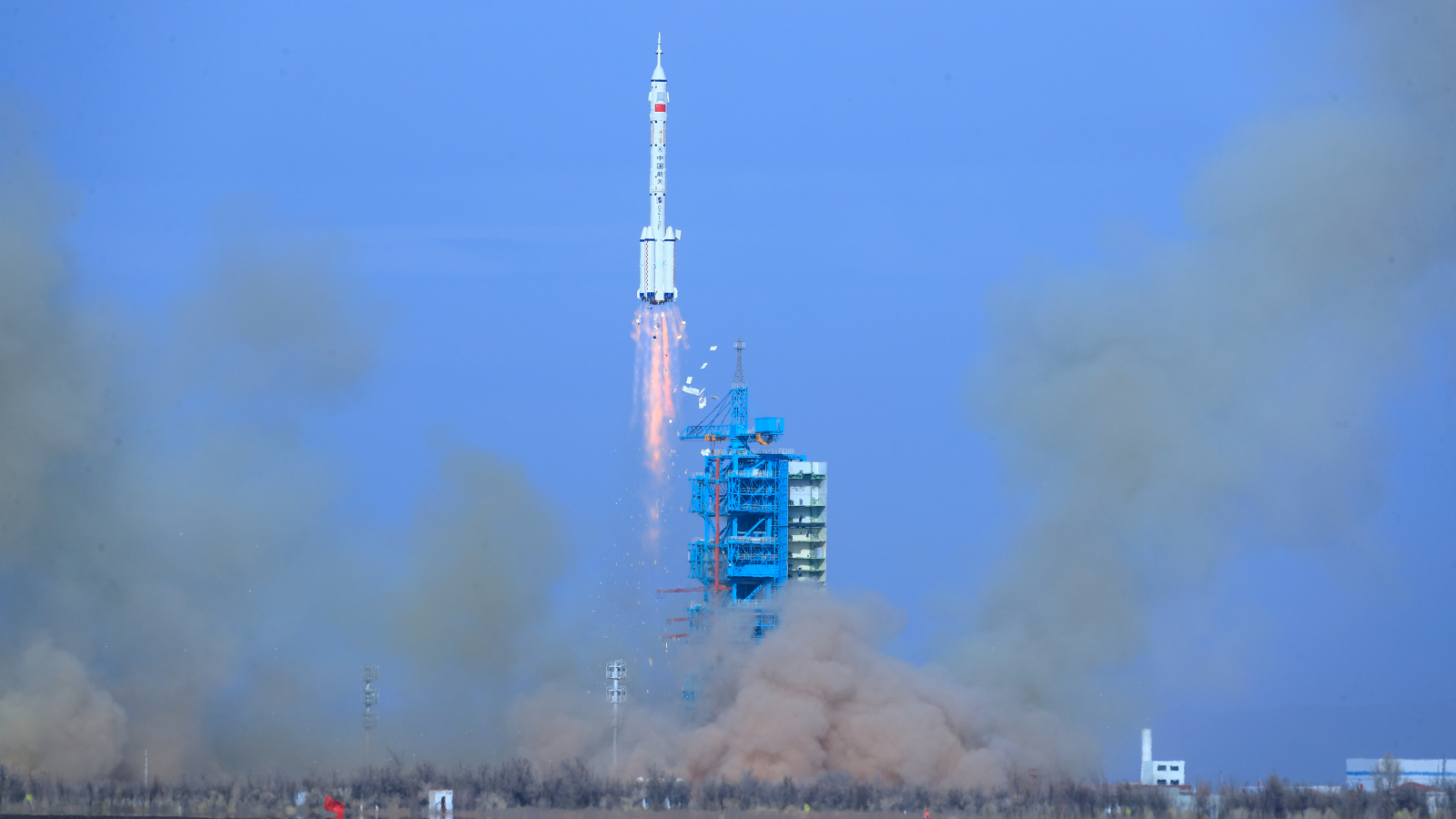Marooned no more! Stranded Chinese astronauts finally have a way home following launch of unmanned 'lifeboat'
China has launched an unmanned "lifeboat" to the Tiangong space station, ending a month-long fiasco. The spacecraft will eventually ferry home the marooned Shenzhou-21 crew, who have been stuck without a return capsule for over a week.

Three Chinese astronauts who were marooned in space for more than a week now have a safe way of returning to Earth after an unmanned "lifeboat" spacecraft was sent to meet them in orbit aboard the Tiangong space station. However, the trio will not be coming home until spring 2026, when their original mission is scheduled to end.
The rescue mission concludes a nearly month-long saga that began when a piece of suspected space junk hit and damaged another return capsule hours before its passengers were due to depart from the space station — sparking a chain reaction of orbital strandings.
The fiasco has revealed a potential flaw in China's astronaut protocols, which could have ended in disaster, and further highlights the need for a more streamlined global "space rescue service," some experts warn.
On Monday (Nov. 24), the unmanned Shenzhou-22 spacecraft was successfully launched into low Earth orbit (LEO) on board a Long March 2F rocket, which took off from Jiuquan Satellite Launch Center in northwest China at around 11:11 p.m. EST, Live Science's sister site Space.com reported. The empty return capsule, which has since docked with the Tiangong station, will eventually ferry home the Shenzhou-21 crew — Zhang Lu, Wu Fei and Zhang Hongzhang — who arrived on Oct. 31.
The astronaut trio was sent to replace the Shenzhou-20 crew — Wang Jie, Chen Zhongrui and Chen Dong — who were originally scheduled to return home on Nov. 5, after completing a six-month stay in space. However, after a successful handover with the Shenzhou-21 crew, the return mission was called off at the last minute when the China Manned Space Agency (CMSA) discovered a large crack in the viewing port of their return capsule.

The Shenzhou-20 crew has since returned to Earth on board the Shenzhou-21 spacecraft, touching down in the Gobi Desert on Nov. 14. However, this meant that the Shenzhou-21 crew was left on Tiangong without a safe ride home. The damaged Shenzhou-20 capsule has remained docked to the space station throughout the ordeal and may have been used as a last resort. But this was never confirmed. (The damaged spacecraft will now likely be detached from the station and deorbited in the coming days or weeks.)
"I'm very glad that they [Shenzhou-20 crew] got home, but it is a bit disconcerting that the replacement crew apparently does not have a vehicle to come back to Earth," Victoria Samson, chief director of space security and stability at the Colorado-based nonprofit Secure World Foundation, previously told Scientific American.
Get the world’s most fascinating discoveries delivered straight to your inbox.
The saga played out exactly as CMSA protocols dictated. But what remains unclear is why these protocols allow for a crew to be stranded in space without a viable return capsule, or why it took over a week to launch Shenzhou-22 into space, especially as the spare return capsule and its launch rocket have been on standby since before the entire saga began, according to Space News.
If an emergency scenario, such as a fire or another space junk impact, had played out on Tiangong, the marooned trio may not have been safely evacuated. Luckily, this did not happen. But it was still a risk.

The situation is reminiscent of another recent "stranded astronaut saga," involving NASA astronauts Butch Wilmore and Suni Williams. This pair arrived on the International Space Station (ISS) in June 2024 for a roughly week-long mission. However, they ended up staying for around nine months after their Boeing Starliner capsule suffered multiple mechanical failures and eventually returned to Earth in March.
Before that, in 2023, NASA astronaut Frank Rubio inadvertently set the record for longest single spaceflight by an American (371 days), after his return capsule was hit by a meteoroid while docked to the ISS, delaying his departure.
However, in both these previous cases, the stranded astronauts could have safely returned to Earth at any time on board the remaining return capsules that were already docked at the ISS.
In addition to highlighting the urgent need to clear up space junk in LEO, some researchers believe the latest saga is also proof that we need some form of global space rescue service that can return stranded astronauts in emergency situations, according to Space.com. One expert described it as a "massive wake-up call."
However, it appears that the CMSA is not worried about a repeat incident in the near future.
"This emergency launch is a first for China, but I hope it will be the last in humanity's journey through space," CMSA official He Yuanjun told state media after the Shenzhou-22 launch, as reported by Reuters.

Harry is a U.K.-based senior staff writer at Live Science. He studied marine biology at the University of Exeter before training to become a journalist. He covers a wide range of topics including space exploration, planetary science, space weather, climate change, animal behavior and paleontology. His recent work on the solar maximum won "best space submission" at the 2024 Aerospace Media Awards and was shortlisted in the "top scoop" category at the NCTJ Awards for Excellence in 2023. He also writes Live Science's weekly Earth from space series.
You must confirm your public display name before commenting
Please logout and then login again, you will then be prompted to enter your display name.
